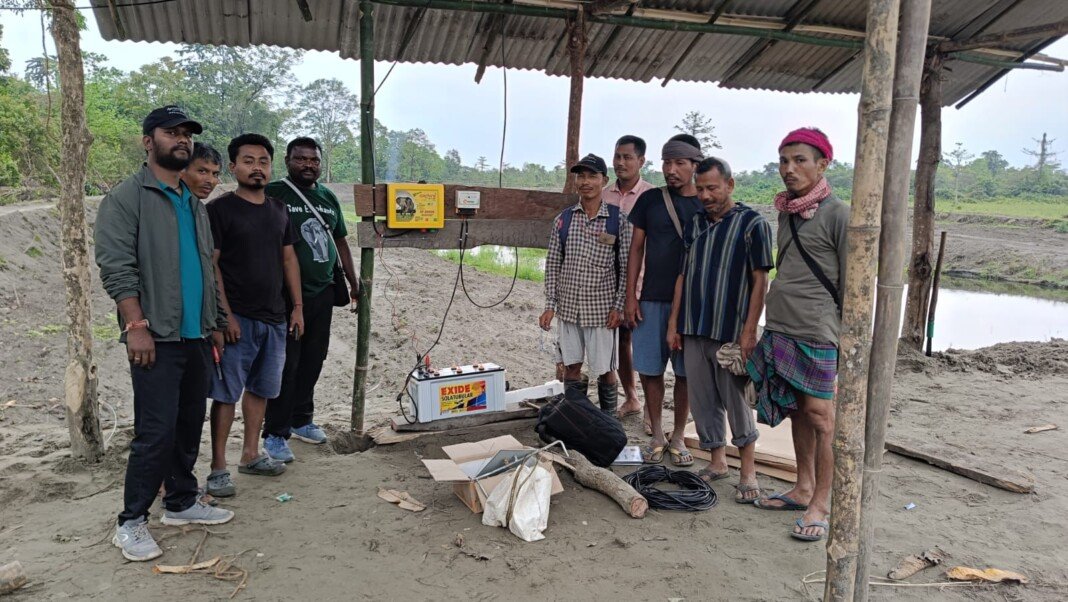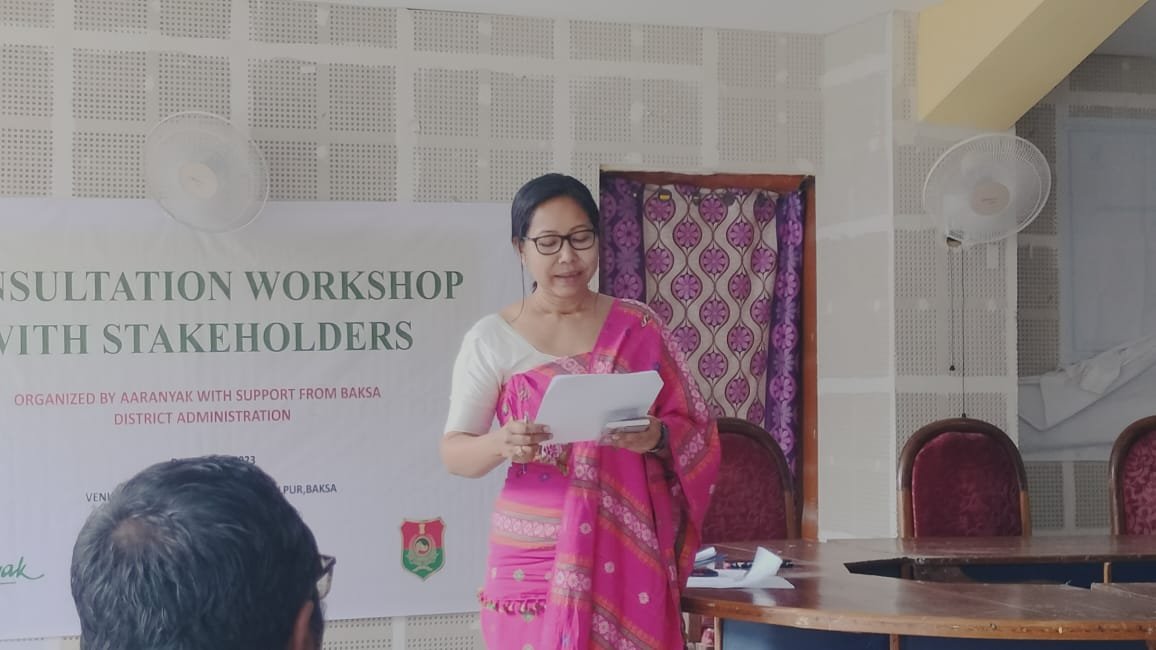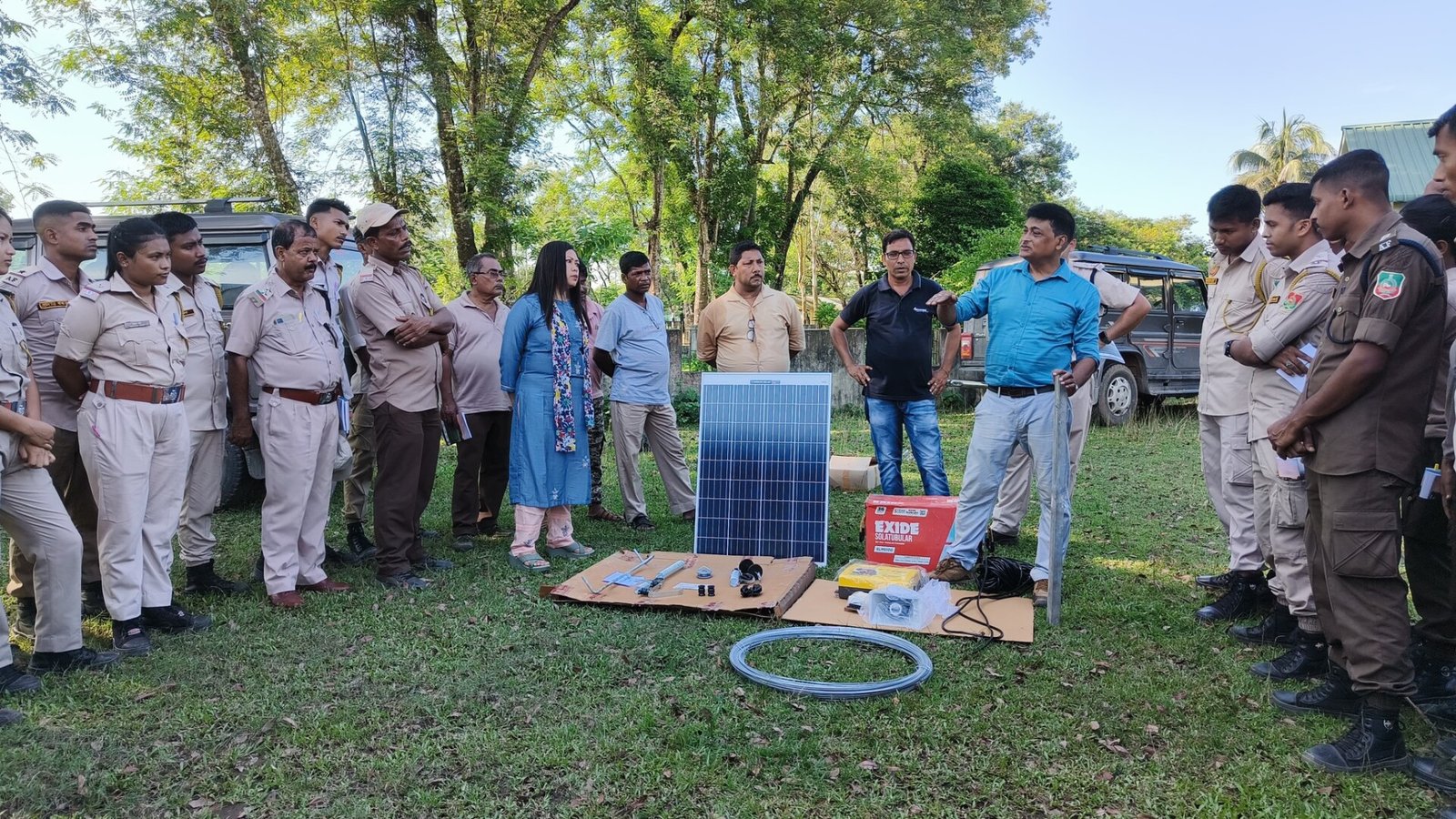HT Bureau
GUWAHATI, April 9: As part of its relentless endeavour to mitigate human-elephant conflict (HEC) to facilitate coexistence, one of the country’s premier biodiversity conservation organisations, Aaranyak, has installed a 2.3 kilometer-long solar-powered electric fence to restrict the movement of wild elephants in the Padumphula area in Sadiya sub-division of Tinsukia district.
The Padumphula area, inhabited by indigenous communities and mostly farmers, has been a hotspot for HEC, situated in Sadiya under Tinsukia district. The farmers in the area have been unable to secure their crops from depredation by wild elephants every year.
After conducting a field study on the HEC problem and its ramifications on the local population in the area, Aaranyak has taken the initiative to mitigate the problem in the area by installing a 2.3 km long single-strand community-managed seasonal solar fence on the periphery of the vegetable crop field at Padumphula recently.
Around 385 households located in Padumphula, Bacha Gaon No 1, Bacha Gaon No 2, and Na-Basa Gaon will benefit from the solar fence in terms of crop security.
The initiative has been taken by Aaranyak in collaboration with the British Asian Trust, supported by the Darwin Initiative (Biodiversity Challenge Funds). In this connection, the community of Padumphula had been trained by the Aaranyak team to build their capacity to install and maintain the solar fence at the community cultural center of Padumphula a few months back.
After the training, the local community members were involved in installing the 2.3 km-long solar fence to protect their vegetable fields with technical guidance and supervision of the Aaranyak team. The installation work was completed on April 5 last. The Aaranyak team was led by Rubul Tanti and comprised of Dibakar Nayak, Tonmoy Gogoi, Debojit Gogoi, and village champion Debananda Gogoi.












